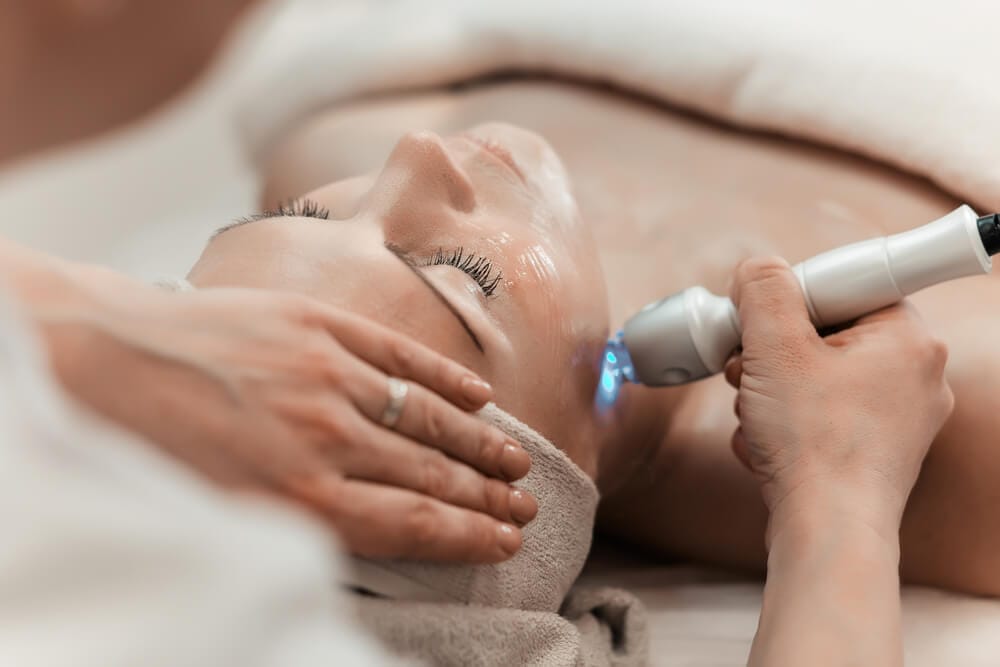- Thriving Guide
- Posts
- Younger-Looking Skin? The Truth About Laser Resurfacing and Collagen
Younger-Looking Skin? The Truth About Laser Resurfacing and Collagen
How ablative and non-ablative lasers work to improve skin texture and restore a youthful glow.

Laser resurfacing facials have become a go-to treatment for those looking to smooth wrinkles, fade scars, and boost overall skin radiance. By using concentrated beams of light, these procedures target damaged skin, stimulate collagen production, and encourage new, healthier skin to form.
But do they really work to make skin look younger? The answer depends on the type of laser you choose, your skin goals, and how your body responds to treatment.
How Laser Facials Stimulate Collagen
Collagen is a structural protein that keeps your skin firm, smooth, and elastic. Over time, collagen production naturally declines—leading to fine lines, sagging, and uneven texture. Lifestyle factors such as smoking, alcohol, sun damage, and lack of sleep can accelerate this process.
Laser resurfacing intentionally creates controlled micro-injuries to the skin. This triggers the body’s healing response, prompting fibroblasts (the skin's repair cells) to generate new collagen and replace damaged tissue. As a result, the skin gradually becomes smoother and more resilient.
Ablative vs. Non-Ablative Lasers
Laser resurfacing treatments fall into two main categories:
Ablative Lasers
These lasers, such as carbon dioxide (CO2) and erbium lasers, remove the outer layer of skin. They deliver dramatic results in fewer sessions but involve more downtime. CO2 lasers are especially effective for deep wrinkles, while erbium lasers target fine lines and mild scars with less risk of hypopigmentation.
Recovery typically takes about one week, during which the skin may appear red and flaky.Non-Ablative Lasers
These gentler treatments work below the skin’s surface to stimulate collagen without removing the outer layer. Because they’re less invasive, 4 to 6 sessions are often required for visible results. Non-ablative lasers are popular for improving tone and texture with minimal downtime, making them ideal for busy lifestyles.
Both ablative and non-ablative lasers are available in fractional versions, which treat the skin in pinpointed patterns rather than as a solid beam. Fractional lasers reduce side effects and recovery time while still boosting collagen production.
When Should You Start Laser Treatments?
Most people under 50 don’t need aggressive CO2 laser treatments. Younger adults typically benefit more from non-ablative lasers or combined therapies like intense pulsed light (IPL), which address early signs of aging, pigmentation, or sun damage with less recovery time.
What to Expect During and After a Session
A typical treatment lasts between 30 minutes and two hours, depending on the area being treated. A numbing cream or anesthetic is applied beforehand, and many patients describe the sensation as mild pinpricks. Cooling air is often used throughout the procedure to minimize discomfort.
Post-Treatment Care
After a session, you may experience redness, swelling, or a “sunburn” sensation. Skin may also feel tight, dry, or crusty for several days. To promote healing:
Use gentle cleansers and thick moisturizers.
Avoid direct sun exposure for at least two weeks.
Follow your provider’s aftercare instructions carefully to reduce risks of scarring or infection.
Are There Risks?
Laser resurfacing is generally safe when performed by a qualified professional. However, possible side effects include:
Temporary redness, swelling, or peeling
Skin discoloration (especially with CO2 lasers on darker skin tones)
Infection or scarring (rare with proper aftercare)
Is It Worth It?
If you’re looking for smoother, firmer, and more radiant skin, laser resurfacing can be an effective option. Non-ablative treatments work gradually, while ablative lasers offer faster, more dramatic results though with more downtime.
If you found this helpful, share it or subscribe to our newsletter for more skin health and beauty insights.